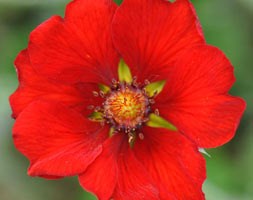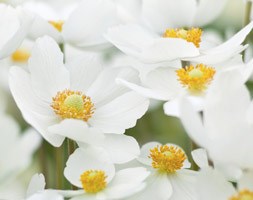Four great perennials from Crocus
by Diane - August 30th, 2013.Filed under: Crocus.
Four great plants for your garden

Astrantia major ‘Rubra’ (masterwort) £9.99
Position: full sun or partial shade Soil: fertile, moist, preferably humus-rich soil Rate of growth: average to fast Flowering period: June to August Hardiness: fully hardy Small, papery, plum- Small, papery, plum-coloured, pincushion-like flowers surrounded by a ruff of wine-tinted bracts, are produced from June to August above deeply lobed, dark green leaves. Although it is an old cottage-garden favourite, this astrantia works equally well in contemporary-style plantings. Use it towards the front of a sunny, yet moist border. Astrantias do not like dry soil. The faded blooms are best cut back close to the ground to prolong flowering. Astrantias have been cultivated in Britain since the 16th century and have numerous common names, such as melancholy gentleman, Hatties pincushion and the more well known masterwort. Garden care: Incorporate plenty of organic matter when planting and water well in dry weather especially newly established plants. Lift and divide large clumps in early spring and apply a generous 5-7 cm mulch of well-rotted manure or garden compost around the plant. Divided specimens may take some time to establish since they dont like having their roots disturbed.

Sedum ‘Ruby Glow’ (stonecrop) £7.99
Position: full sun or partial shade Soil: moderately fertile, well-drained, neutral to slightly alkaline soil Rate of growth: average to fast-growing Flowering period: July to September Flower colour: ruby-red Other features: attractive to butterflies and bees; the dried flower-heads provide colour and structure in the winter garden Hardiness: fully hardy Succulent, greenish-purple leaves, topped with large, flat heads of ruby-red, star-shaped flowers from mid-summer to early autumn. This low-growing form of sedum is perfect for softening the front of a sunny, well-drained border. Best planted in generous drifts, the flowers are a valuable nectar source for butterflies and bees. Garden care: The flowerheads look great left during the winter to add shape and texture to your border. In February and March cut back the old flowerheads and apply a generous 5-7cm (2-3in) mulch of well-rotted garden compost or manure around the base of the plant. Once established, sedums can have a tendency to flop leaving an open and unsightly centre, especially in fertile soil. One technique to help prevent this is the ‘Chelsea chop’. During the last week of May (Chelsea Flower Show week), cut one in every three stems back to the ground. This will produce plants that are less lush and flower slightly later.

Potentilla atrosanguinea (cinquefoil) £5.99
Position: full sun Soil: poor to moderately fertile, well-drained soil Rate of growth: average Flowering period: June to August Flower colour: dark red Other features: hairy, strawberry-like leaves Hardiness: fully hardy Sprays of saucer shaped dark red flowers from June to August and hairy, strawberry-like leaves. This vibrant Himalayan cinquefoil is perfect for a planting scheme based on hot colours. An excellent long flowering plant, given a sunny, well-drained site, it is trouble free and easy to grow. Garden care: Lift and divide large clumps in autumn or spring. In spring apply a generous 5-7cm (2-3in) mulch of well-rotted garden compost or manure around the base of the plants Goes well with: Crocosmia ‘Lucifer’, Hemerocallis ‘Stafford’, Rosa ‘L.D. Braithwaite’, Dahlia ‘Bishop of Llandaff’, Cosmos astrosangineus, Artemisia ‘Powis Castle’

Anemone sylvestris (snowdrop anemony, snowdrop windflower) £7.99
Position: full sun or partial shade Soil: moist but well drained, humus-rich soil. Likes neutral or alkaline soils Rate of growth: fast Flowering period: April – May Hardiness: fully hardy A lovely little anemone which forms a mound of deeply cut foliage, topped with nodding white flowers with yellow centres in late spring. The plant gets its common name from the way the flower buds emerge on bent stems, so they hang like snowdrops. Then they straighten up and face outwards as the flowers start to open. The petals catch the breeze, making them look a little like butterflies, and they will grow to form open cup shapes up to 7cm across. They are scented and are good for cutting, but if you leave them on, they will be followed by white woolly seedheads. Find the right spot for them and they will naturalise and spread into large clumps. Garden care: Apply a generous 5-7cm mulch of well-rotted garden compost or manure around the base of the plant in spring. Cut back to just above ground level if they start to look messy and they will quickly rejuvenate. Where necessary, lift and divide congested clumps in early spring.






